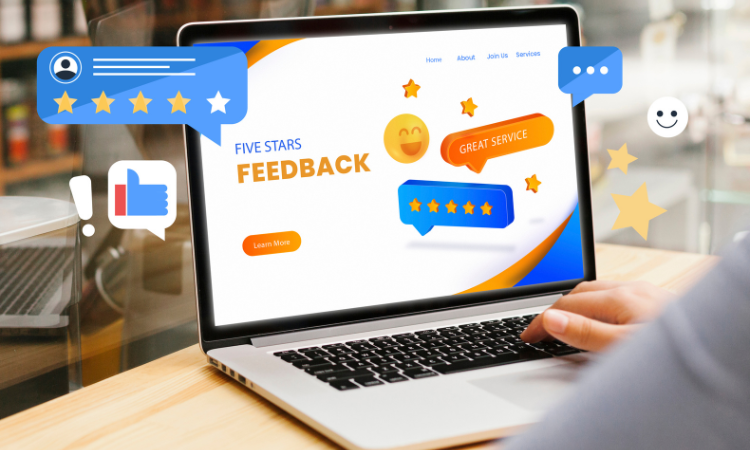Have you ever felt bombarded by survey requests after every little interaction with a brand? A post-purchase survey, another after a support chat, and then one more asking for feedback on your “overall experience.” Eventually, you stop responding — not because you don’t care, but because you’re exhausted.
That’s survey fatigue, and it’s the enemy of every feedback program. The irony is painful for businesses. You launch surveys to listen better, but when customers feel over-surveyed, they disengage, unsubscribe, or ignore your messages entirely. The result? Fewer responses, lower data quality, and a frustrated audience.
This is where Survey Throttling steps in. It lets you control how often customers receive survey requests, ensuring no one gets overwhelmed — no matter how many touchpoints they interact with.
With throttling, your surveys become more respectful and strategic. You continue gathering valuable feedback without losing customer trust.
TL;DR
Survey Throttling is the simplest and smartest way to avoid over-surveying customers while still collecting meaningful feedback. Here’s what you need to know:
- Survey throttling prevents feedback fatigue by limiting how often a customer receives survey requests.
- It works across all channels (email, SMS, WhatsApp, web widgets) to keep survey frequency under control.
- Better timing means better data—customers respond more thoughtfully when they aren’t overwhelmed.
- You decide the rules (e.g., one survey every 14 days), and the system enforces them automatically.
- Great for transactional feedback—throttling avoids spamming customers after multiple interactions in a short time.
👉 Done right, you’ll still collect high-quality feedback without overwhelming your customers.
What is Survey Throttling?
Survey Throttling is a frequency-control feature that limits how often a customer receives survey requests within a specific timeframe. It’s designed to protect your audience from survey fatigue while keeping feedback programs efficient.
Think of it like a “cooling-off period” between survey invitations. For example:
- A customer makes three purchases in a week. Instead of three surveys, throttling ensures they only receive one.
- A support ticket closes and another transaction happens shortly after. Throttling prevents back-to-back surveys.
Key aspects of survey throttling:
- Frequency control: Define how often surveys can be sent (e.g., one per week, one per month).
- Cross-channel coverage: Rules apply across all channels—email, SMS, WhatsApp, in-app, and web widgets.
- Customer-first approach: Protects customers from survey fatigue while keeping feedback programs effective.
💡 Think of it like dating: too many texts in a short period can push someone away. The same principle applies here. By spacing out your surveys, you make sure each one is more likely to be opened, read, and thoughtfully answered.
Why Survey Throttling Matters
Survey throttling isn’t just about limiting surveys—it’s about building a smarter, customer-friendly feedback system. Without it, businesses risk over-surveying, which leads to survey fatigue, lower response rates, and frustrated customers.
Here’s why it matters:
-
Prevents Survey Fatigue
Sending too many surveys too often leads to fatigue. Throttling helps maintain customer enthusiasm for sharing feedback.
-
Improves Response Quality
When customers aren’t overwhelmed, they take more time to provide thoughtful, accurate responses.
-
Protects Brand Reputation
Nothing feels worse than irritating your customers. A throttling mechanism shows you value their time and reduces the risk of being seen as spammy.
-
Helps Balance Touchpoints
Not every touchpoint needs feedback. Throttling forces you to prioritize the moments that matter most—like onboarding, issue resolution, or product launches.
-
Reduces Unsubscribes
People rarely unsubscribe from a single survey, but repeated oversurveying will push them away. Throttling helps keep your survey audience intact.
💡 Pro Tip: One retail client noticed that customers were more willing to engage with surveys again. The reduced frequency made each feedback request feel more intentional and respectful — leading to noticeably higher participation and better response quality.
How to Set Up Survey Throttling in Zonka Feedback
Now let’s get practical. Here’s how you can set up survey throttling in Zonka Feedback so you don’t have to worry about overwhelming your customers.
Step 1: Log in to Your Zonka Feedback Account
- Go to Zonka Feedback Login.
- Enter your credentials to access the dashboard.
- From the dashboard, head over to Account Settings.
-2.png?width=2020&height=1256&name=frame_generic_light%20(8)-2.png)
Step 2: Navigate to Survey Hub
- Under settings, click on Survey Hub
- This is where you’ll manage settings that apply across surveys.
-1.png?width=2020&height=1256&name=frame_generic_light%20(9)-1.png)
Step 3: Open Survey Hub
- Once inside Survey Hub, go to General.
- This is where survey throttling is managed at the account level.
-1.png?width=2001&height=1256&name=frame_generic_light%20(10)-1.png)
Step 4: Set Throttling Period
- Scroll down until you find the option Survey Throttling.
- Choose the time period for throttling. Options range from 7 days to 120 days.
- For example:
- If you set 7 days → A customer can only receive one survey in a 7-day window.
- If you set 30 days → They’ll only get one survey per month.
-1.png?width=2007&height=1256&name=frame_generic_light%20(11)-1.png)
💡 Pro Tip: Start with a shorter throttling window (like 7–14 days) and adjust based on your engagement rates.
Step 5: Save and Apply
- Once you’ve chosen the throttling period, click Update.
- The setting applies across your account, so you won’t need to configure it for each survey individually.
Step 6: Test and Monitor
- Distribute a live survey.
- If a customer responds, and you attempt to send another within the throttling window, Zonka Feedback will automatically prevent duplicate requests.
- Monitor analytics to see how throttling impacts your response rates.
💡 Pro Tip: Combine throttling with survey distribution logic—like sending only after specific events (purchase, support closure)—for even better targeting.
🔗Need help? You can read the detailed setup guide in our help center: How to Enable Survey Throttling in Zonka Feedback.
With this setup, you’ll never have to worry about oversurveying your audience again.
Pro Tips & Best Practices
Over time, I’ve seen throttling work best when combined with thoughtful survey strategies. Here’s what I recommend:
-
Match Throttling to Customer Journey
If your customers interact frequently (like SaaS users), a 7–14 day throttling period works well. For industries with less frequent interactions (like healthcare or retail), 30–60 days may be better.
-
Don’t Just Set and Forget
Check your analytics after a few weeks. If response rates are still low, adjust your throttling window.
-
Communicate Clearly
If customers feel surveys are too frequent, let them know you’ve adjusted frequency based on their feedback—it builds trust.
-
Prioritize High-Value Touchpoints
Don’t waste throttling opportunities on routine interactions. Use them for impactful moments like onboarding, major purchases, or service resolutions.
💡 Pro Tip: Pair throttling with personalized survey invites (like using customer name or referencing their last interaction) to make each survey feel more intentional.
Real-World Use Cases
Survey throttling isn’t just theory—it has practical applications across industries.
- SaaS: A user who logs in daily could otherwise receive dozens of survey prompts in a month. Throttling ensures they’re asked for feedback at meaningful intervals, like once every two weeks.
- Retail & eCommerce: Customers who make multiple purchases in a short period shouldn’t be hit with surveys every time. A 30-day throttle captures overall shopping experience without overwhelming them.
- Healthcare: Patients may have frequent touchpoints (appointments, lab visits). A 60-day throttling window ensures they’re not asked repeatedly in a short time.
- Banking & Finance: With high-touch interactions like transactions and support calls, throttling to 15–30 days prevents oversurveying while still tracking service quality.
Even outside industries, throttling is invaluable for multi-touchpoint journeys. Imagine a customer who chats with support, makes a purchase, and logs into the app—all in the same week. Without throttling, they’d be spammed with three separate surveys. With throttling, they get just one thoughtful feedback request.
Pros & Cons of Survey Throttling
| Pros | Cons / Watch Outs |
|---|---|
| ✅ Prevents oversurveying and fatigue | ⚠️ Risk of missing feedback on important interactions |
| ✅ Improves quality of responses | ⚠️ Needs thoughtful configuration (not one-size-fits-all) |
| ✅ Protects brand reputation | ⚠️ Too long a throttle window may reduce data volume |
| ✅ Reduces unsubscribes | ⚠️ Customers with unique cases may not be surveyed timely |
| ✅ Easy to configure | ⚠️ Requires ongoing monitoring and tweaking |
💡 Pro Tip: Always strike a balance. Too short a window = risk of oversurveying. Too long a window = fewer insights. Adjust based on your business cycle.
Related Features to Explore
Survey throttling works best when combined with other survey optimization strategies. For example:
- Partial Responses → Even if a survey is throttled, you capture data from incomplete submissions.
- Distribution Logic → Trigger surveys only at specific events or touchpoints.
- Workflows & Automation → Send reminders or escalate critical feedback without overwhelming users.
- Survey Analytics → Monitor completion rates and drop-off patterns alongside throttling to see the full picture.
Together, these features create a healthy feedback ecosystem—one where you respect customers’ time while still gathering insights that matter.
Closing Thoughts
Survey Throttling isn’t just about frequency — it’s about respecting your customers’ time. When you control how often you ask for feedback, each request feels more meaningful and intentional.
If you haven’t tried survey throttling yet, I highly recommend giving it a go. It’s one of those small tweaks that makes a big difference in customer experience and data quality.
If you’re using Zonka Feedback, it takes just a couple of minutes to enable it under Survey Hub > General Settings. Not using it yet? Start a free trial or book a demo to see how it can transform the way you collect feedback.
👉 Remember: Feedback is gold, but only if it’s asked for at the right time.
.jpg)
.jpeg?width=150&height=150&name=casual%20photograph%20(1).jpeg)

.jpg)
.jpg)
.jpg)

.jpg)
.jpg)


